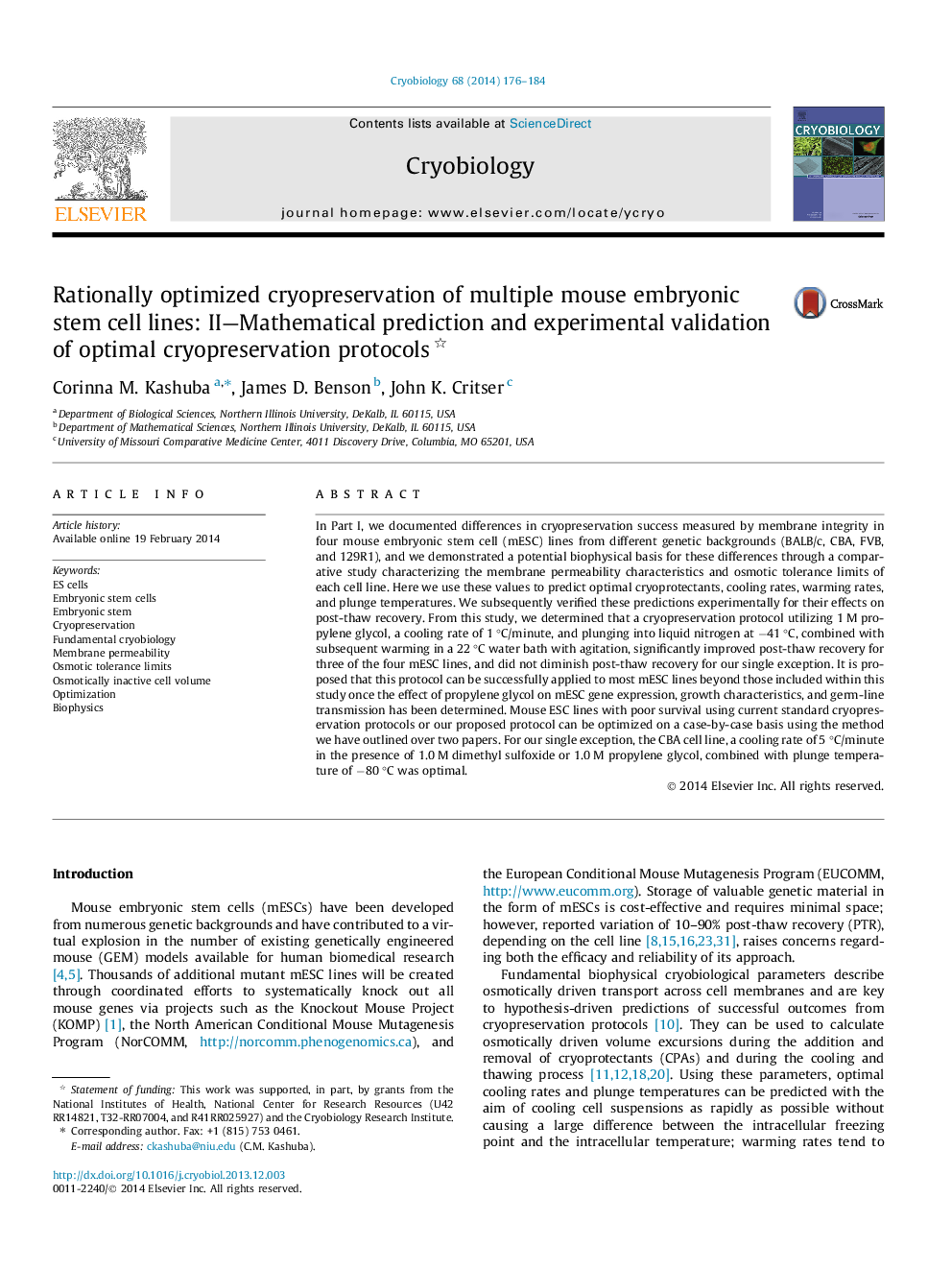| Article ID | Journal | Published Year | Pages | File Type |
|---|---|---|---|---|
| 10927972 | Cryobiology | 2014 | 9 Pages |
Abstract
In Part I, we documented differences in cryopreservation success measured by membrane integrity in four mouse embryonic stem cell (mESC) lines from different genetic backgrounds (BALB/c, CBA, FVB, and 129R1), and we demonstrated a potential biophysical basis for these differences through a comparative study characterizing the membrane permeability characteristics and osmotic tolerance limits of each cell line. Here we use these values to predict optimal cryoprotectants, cooling rates, warming rates, and plunge temperatures. We subsequently verified these predictions experimentally for their effects on post-thaw recovery. From this study, we determined that a cryopreservation protocol utilizing 1 M propylene glycol, a cooling rate of 1 °C/minute, and plunging into liquid nitrogen at â41 °C, combined with subsequent warming in a 22 °C water bath with agitation, significantly improved post-thaw recovery for three of the four mESC lines, and did not diminish post-thaw recovery for our single exception. It is proposed that this protocol can be successfully applied to most mESC lines beyond those included within this study once the effect of propylene glycol on mESC gene expression, growth characteristics, and germ-line transmission has been determined. Mouse ESC lines with poor survival using current standard cryopreservation protocols or our proposed protocol can be optimized on a case-by-case basis using the method we have outlined over two papers. For our single exception, the CBA cell line, a cooling rate of 5 °C/minute in the presence of 1.0 M dimethyl sulfoxide or 1.0 M propylene glycol, combined with plunge temperature of â80 °C was optimal.
Keywords
Related Topics
Life Sciences
Agricultural and Biological Sciences
Agricultural and Biological Sciences (General)
Authors
Corinna M. Kashuba, James D. Benson, John K. Critser,
